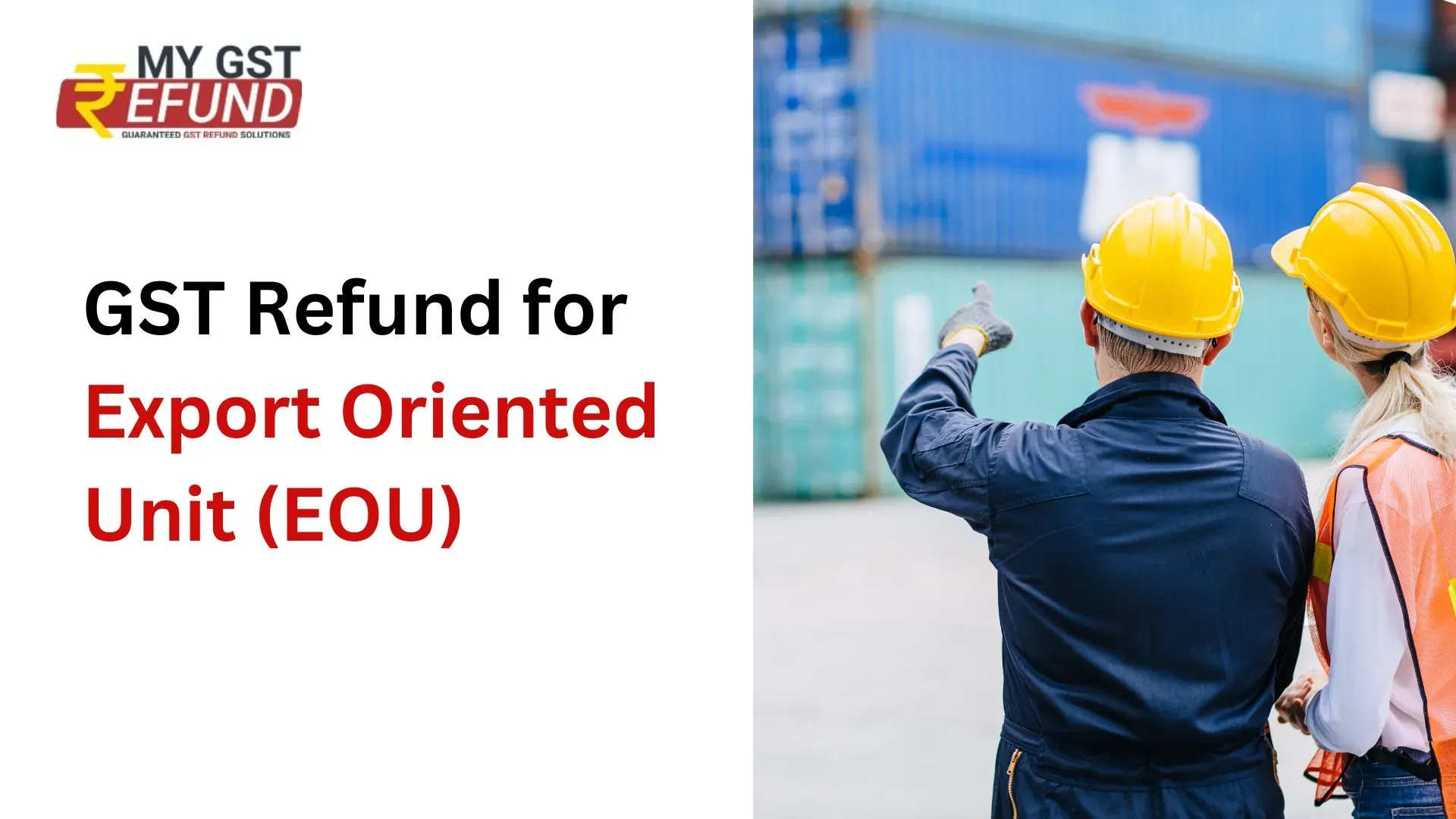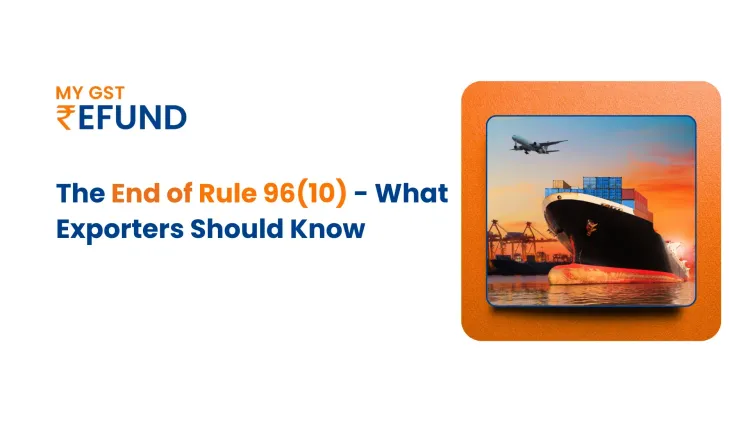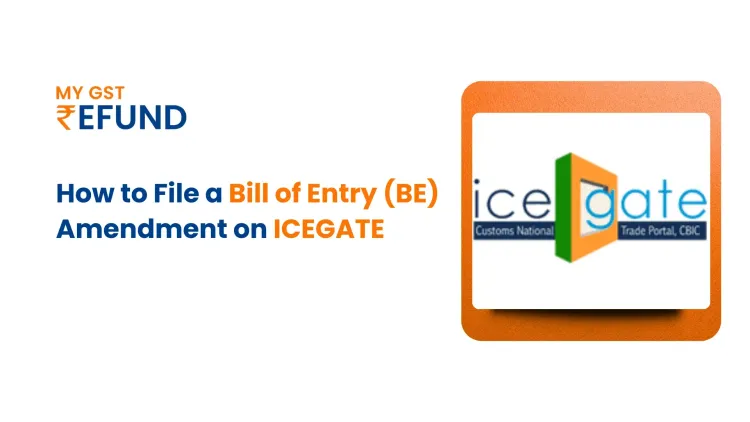GST Refund for Export Oriented Unit (EOU)
Published on: Tue Feb 27 2024
Bio (Reveal/Hide)

What are EOUs?
EOU stands for Export-Oriented Unit. It is a type of industrial unit that focuses on exporting its entire production of goods or services. The main objective of EOUs is to promote exports and increase foreign exchange earnings for the country.
EOUs can engage in various activities such as manufacturing, services, development of software, repair, remaking, reconditioning, and re-engineering including making of gold/silver/platinum jewelry and articles. Agriculture, agro-processing, aquaculture, animal husbandry, biotechnology, floriculture, horticulture, pisciculture, viticulture, poultry, sericulture, and granites can also be undertaken in EOUs.
Objectives of the EOU Scheme
1. Increase Exports and Foreign Exchange Earnings:
By focusing solely on exporting their entire production, EOUs contribute significantly to boosting the country's export volume and value. This leads to an increase in foreign exchange earnings, which plays a crucial role in strengthening the nation's financial position.
2. Attract Investment and Technology Transfer:
The scheme offers lucrative incentives like tax exemptions and duty-free imports, making it attractive for foreign investors to set up EOUs. This leads to increased foreign direct investment (FDI), bringing in fresh capital and advanced technologies, ultimately contributing to economic growth.
3. Generate Employment:
As EOUs expand their operations, they create new jobs, contributing to employment generation, particularly in specific sectors and regions where they are established. This not only alleviates unemployment but also improves the socio-economic conditions of the surrounding communities.
4. Promote Industrial Development:
The scheme encourages setting up EOUs in various sectors, including manufacturing, services, and agriculture. This diversifies the country's industrial base, leading to overall economic development and creating opportunities for skill development in specialized areas.
5. Boost Regional Development:
EOUs can be set up anywhere in the country, encouraging industrial activity even in less developed regions. This promotes balanced regional development by attracting investments and creating job opportunities in these areas.
Application procedure
The application procedures and approvals for setting up an EOU in India can vary slightly depending on the specific location and sector, but here's a general overview:
Initial Steps:
Choose Your Location: Identify a suitable location for your EOU, considering factors like infrastructure, accessibility, and government regulations specific to the chosen zone.
Understand Eligibility: Check if your proposed activity falls under the eligible categories for EOUs as defined in the Foreign Trade Policy (FTP) and Handbook of Procedures (Handbooks).
Prepare Project Report: Develop a comprehensive project report outlining your business plan, investment details, proposed activity, and expected export performance.
Formal Application:
Submit Application Form: File the designated application form (ANF 6A) in triplicate to the Development Commissioner (DC) of the Special Economic Zone (SEZ) or the designated authority depending on your location.
Pay Application Fee: Submit the required application fee, usually in the form of a Demand Draft.
Attach Supporting Documents: Compile and attach all necessary documents as per the list provided by the DC, typically including:
1. Company registration documents (Certificate of Incorporation, AoA, etc.)
2. Project report
3. Financial statements and projections
4. Land/premises lease agreement
5. Import Export Code (IEC)
6. Banker's certificate, PAN card, etc.
Approvals and Permissions
Unit Approval Committee (UAC) Review: Your application undergoes review by the UAC, which may seek clarifications or additional information.
Letter of Permission (LoP): Upon UAC approval, you receive a LoP from the DC, permitting you to set up your EOU.
Additional Approvals: Depending on your specific activity and location, you might need additional licenses or permits from various authorities like pollution control boards, electricity boards, etc.
Eligibility for setting up an EOU
The eligibility criteria for setting up an EOU in India can vary slightly depending on the specific sector and location, but here's a general overview:
Minimum Investment:
General: A minimum investment of Rs. 1 crore in plant and machinery is required for most sectors.
Exceptions: This minimum investment requirement doesn't apply to:
Existing Units: Existing units seeking to convert to EOU status.
Specific Sectors: Units operating in handicrafts, agriculture, floriculture, aquaculture, animal husbandry, information technology, services, brass hardware, and handmade jewellery.
As of March 2022, there were a total of 4,940 EOUs operating in India.
These EOUs contributed to exports of over USD 340 billion in 2021-22.
The major sectors contributing to EOU exports include gems and jewellery, engineering goods, chemicals, and textiles.
Can second-hand goods be imported by EOUs?
Yes, second-hand goods can be imported by EOUs in India without any age limit. This is a significant benefit offered by the EOU scheme to help businesses acquire needed equipment at potentially lower costs. However, there are some key points to consider:
1. Duty and Taxes: While EOUs can import second-hand goods duty-free, they may still be liable for other taxes and levies depending on the specific item and regulations.
2. Age Restrictions: Although there's no official age limit, certain restrictions might apply based on the type of equipment and specific regulations imposed by customs authorities. It's best to clarify with officials beforehand.
3. Documentation: For importing second-hand goods, EOUs must possess proper documentation like purchase invoices, Bill of Entry, depreciation schedules (if applicable), and clearance certificates from the exporting country.
4. Valuation: Customs authorities might employ specific methods to determine the value of second-hand goods for duty purposes. It's crucial to understand this process and comply with valuation requirements.
GST Refund for Export Oriented Units
EOUs (Export Oriented Units) can claim different types of refunds under GST depending on the nature of the supplies and transactions involved. Here's a breakdown of the main scenarios:
Refund of IGST for Deemed Exports:
Supplies covered: Raw materials, consumables, spares, packing materials, and other inputs used in the manufacturing process for exports by EOUs are considered deemed exports.
Eligibility: Both the supplier and EOU need to comply with specific regulations and documentation requirements as per the GST rules and notifications.
Claiming process: Suppliers file an online application (Form GST RFD-01) on the GST portal with supporting documents within two years of filing the relevant return.
Refund of Unutilized ITC on Zero-Rated Supplies:
Scenario: When an EOU makes supplies that are zero-rated under GST (e.g., exports to SEZs), they would have claimed ITC on their purchases used for those supplies. Since the final supply is exempt from GST, this ITC becomes "unutilized."
Eligibility: EOUs can claim a refund of this unutilized ITC subject to specific conditions and documentation requirements.
Claiming process: Similar to claiming refund for deemed exports, EOUs file an online application (Form GST RFD-01) on the GST portal with supporting documents within two years of filing the relevant return.
Related Posts





